Mockingbirds are birds that you might spot across the contiguous United States. But are you certain that you can identify a mockingbird correctly?
To help you hone your bird identification skills, below, we will take a closer look at mockingbirds, then talk about some other birds that look like mockingbirds and how to tell them apart.
What Is a Mockingbird?
Mockingbirds are mimids – within the new world family of passerine birds called Mimidae. This family includes not only mockingbirds but also thrashers, tremblers, and new world catbirds.
People sometimes ask, are catbirds and mockingbirds the same? And while these are, of course, different species, they do come from the same bird family.
The only species of mockingbird found in North America is the Northern Mockingbird, Mimus polyglottos.
It is typically a permanent resident, but northern birds are sometimes known to move south during harsh winters.
Of course, the mockingbird is well known for its ability to mimic the sounds and songs it hears. Its scientific name ‘Mimus polyglottos’ comes from mimus – Latin for mimic – and polyglottos from ‘many-tongued.’
What Does a Mockingbird Look Like? How Do You Identify a Northern Mockingbird?
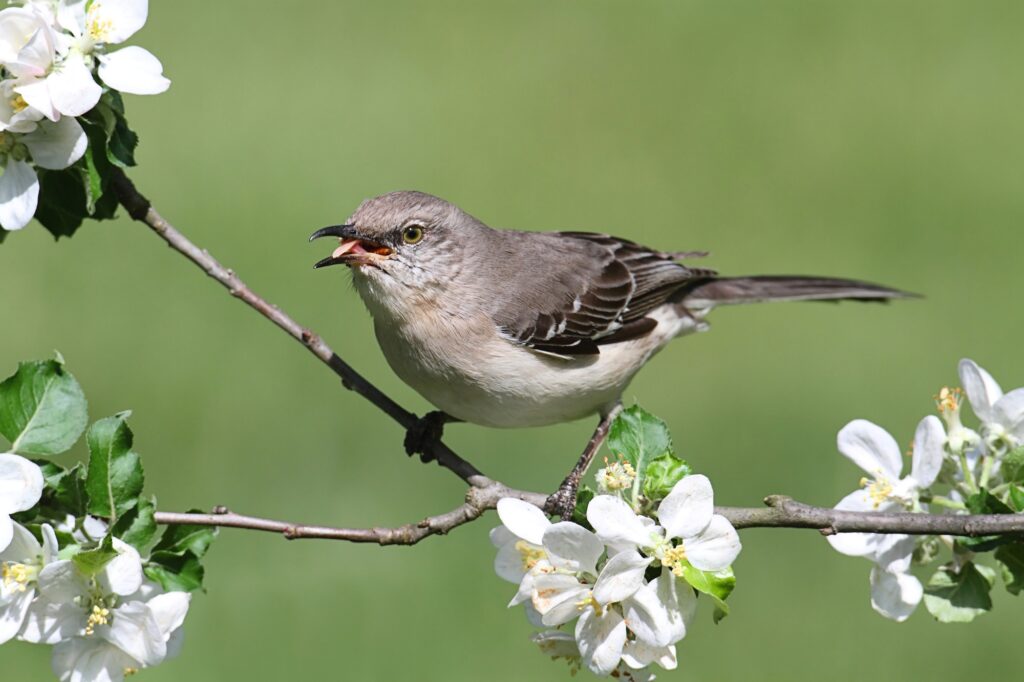
- Length: 8.3-10.2 in (21-26 cm)
- Weight: 1.6-2.0 oz (45-58 g)
- Wingspan: 12.2-13.8 in (31-35 cm)
The northern mockingbird is a medium-sized songbird with a small head, a long, thin bill that curves down just slightly, and long legs. It has short, rounded, and broad wings, a fairly slender form, a hooked bill, a black tail, and quite a long tail.
The main color of these birds is a gray-brown color, which is somewhat paler on their breast and belly.
On each wing are white patches, and white outer tail feathers are visible when the birds are in flight.
Birds That Look Like Mockingbirds
If you catch a glimpse of a gray and white bird species, you might think you have caught sight of a mockingbird.
But sometimes, you may have spotted a different species. Here are some of the birds that might be mistaken for a mockingbird and which resemble these birds to some degree:
Loggerhead Shrike
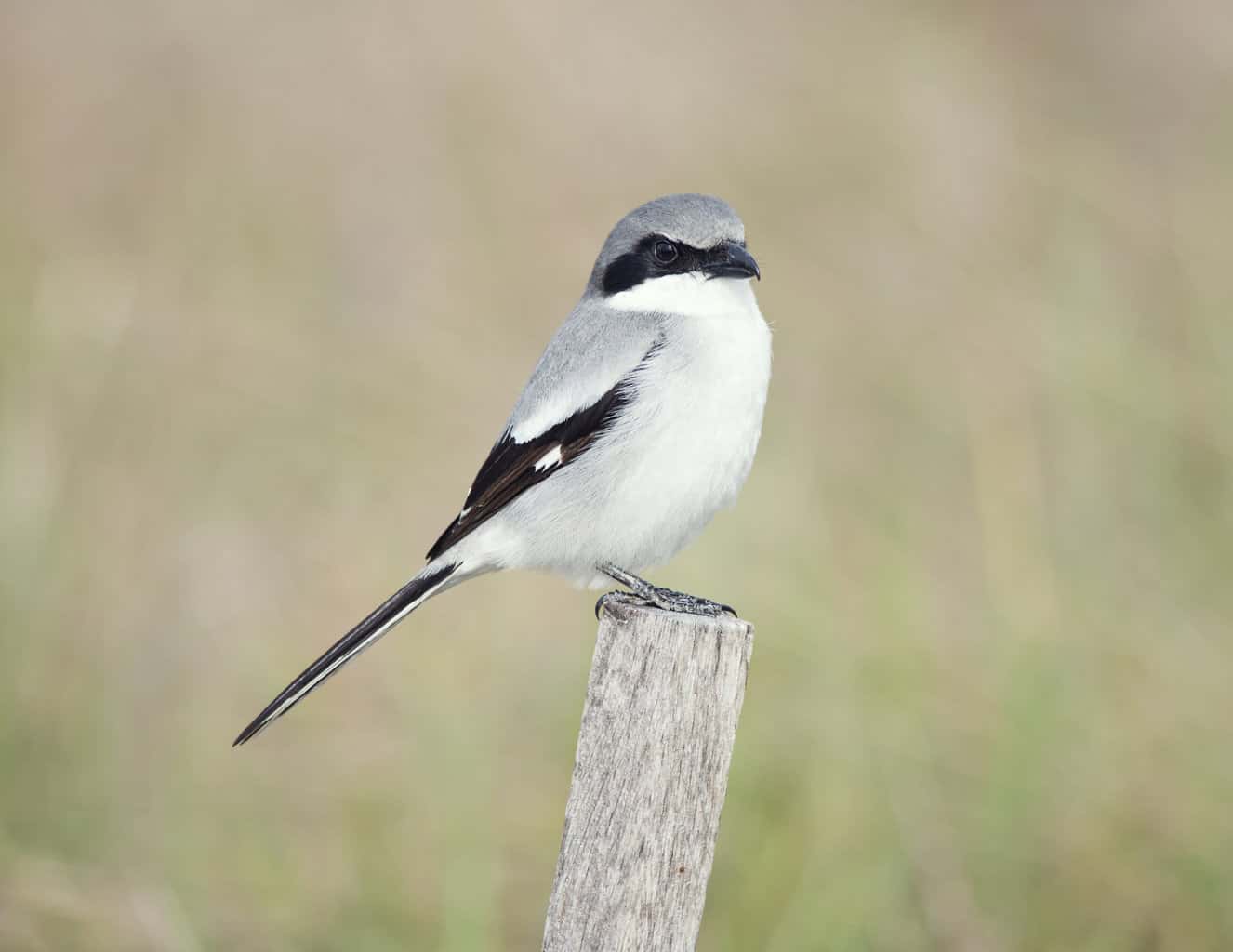
- Length: 7.9-9.1 in (20-23 cm)
- Weight: 1.2-1.8 oz (35-50 g)
- Wingspan: 11.0-12.6 in (28-32 cm)
Though shrikes share an overall color pattern with mockingbirds, they differ in several ways.
They have deeper black wings, a black mask, bigger heads than mockingbirds, and a heavy bill hooked much more prominently than the thin bill of the northern mockingbird.
Northern Shrike
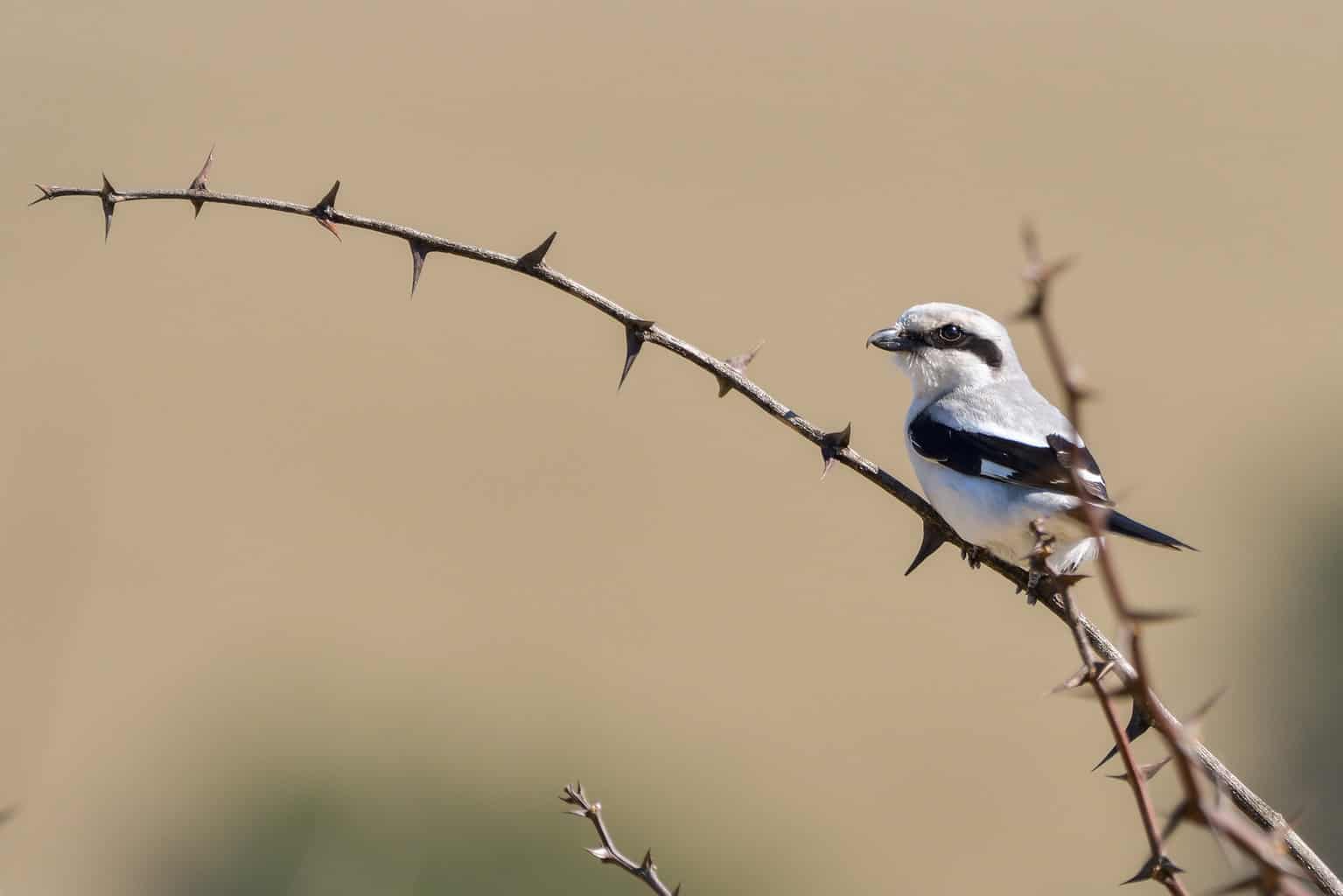
- Length: 9.1-9.4 in (23-24 cm)
- Weight: 2.0-2.8 oz (56-79 g)
- Wingspan: 11.8-13.8 in (30-35 cm)
This is another shrike will a similar color pattern to mockingbirds. But again, as with the above, look out for the bill shape, head size, blacker wings, and black eye mask that can help you to tell these birds apart. (These shrikes have less of a pronounced eye mask than loggerhead shrikes and can have to bar across their white underparts.)
Gray Catbirds
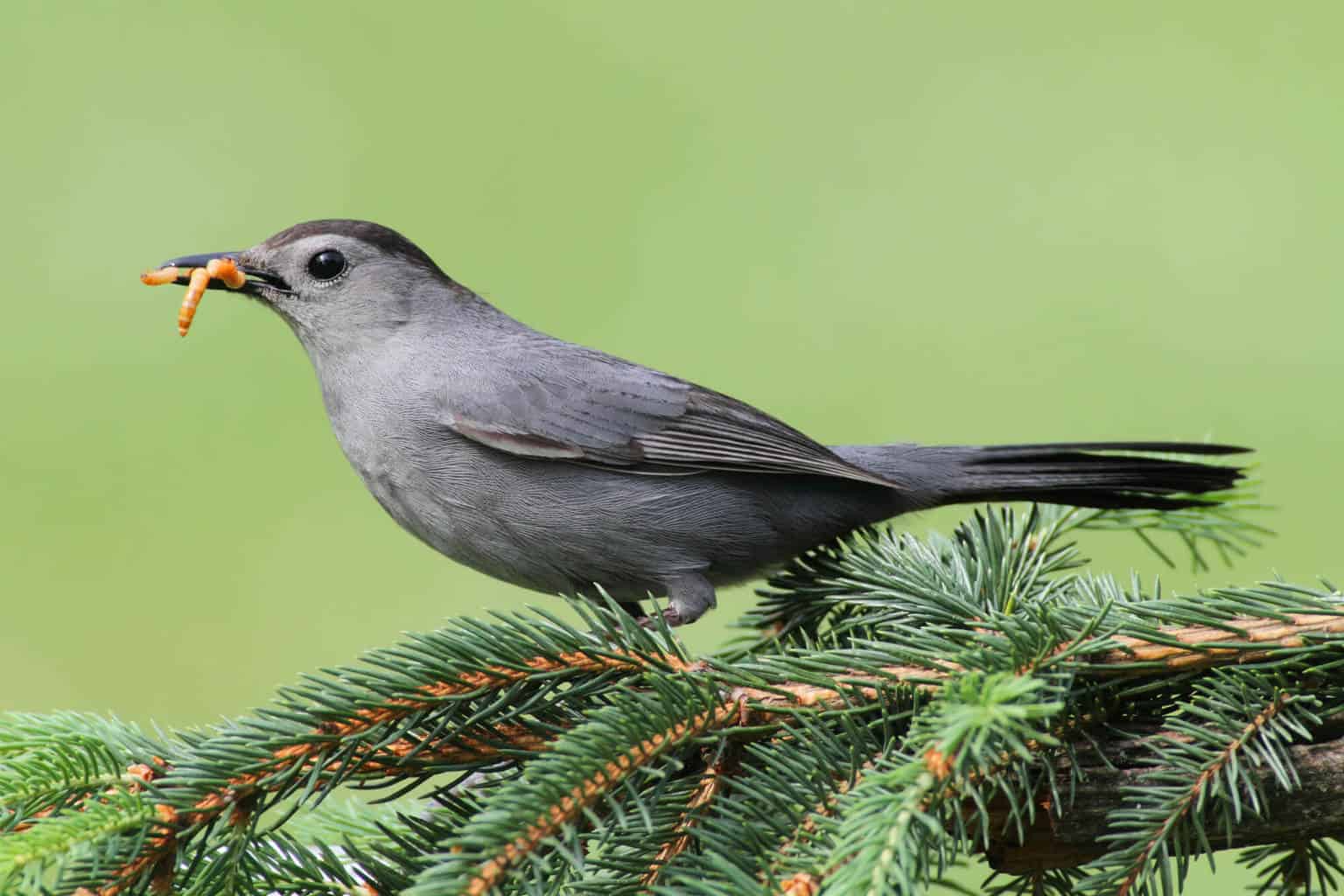
- Length: 8.3-9.4 in (21-24 cm)
- Weight: 0.8-2.0 oz (23.2-56.5 g)
- Wingspan: 8.7-11.8 in (22-30 cm)
These birds lack the white underparts, wing flashes, and outer tail feathers of the mockingbird and are a darker gray hue than the mockingbird, with no brownish tinge within the gray.
They also have a darker cap on their heads and perch holding their tails downwards, which can sometimes give them a hunchbacked look. Cinnamon-hued under-tail coverts can also be spotted on this bird that is absent on the mockingbird.
Townsend’s Solitaires
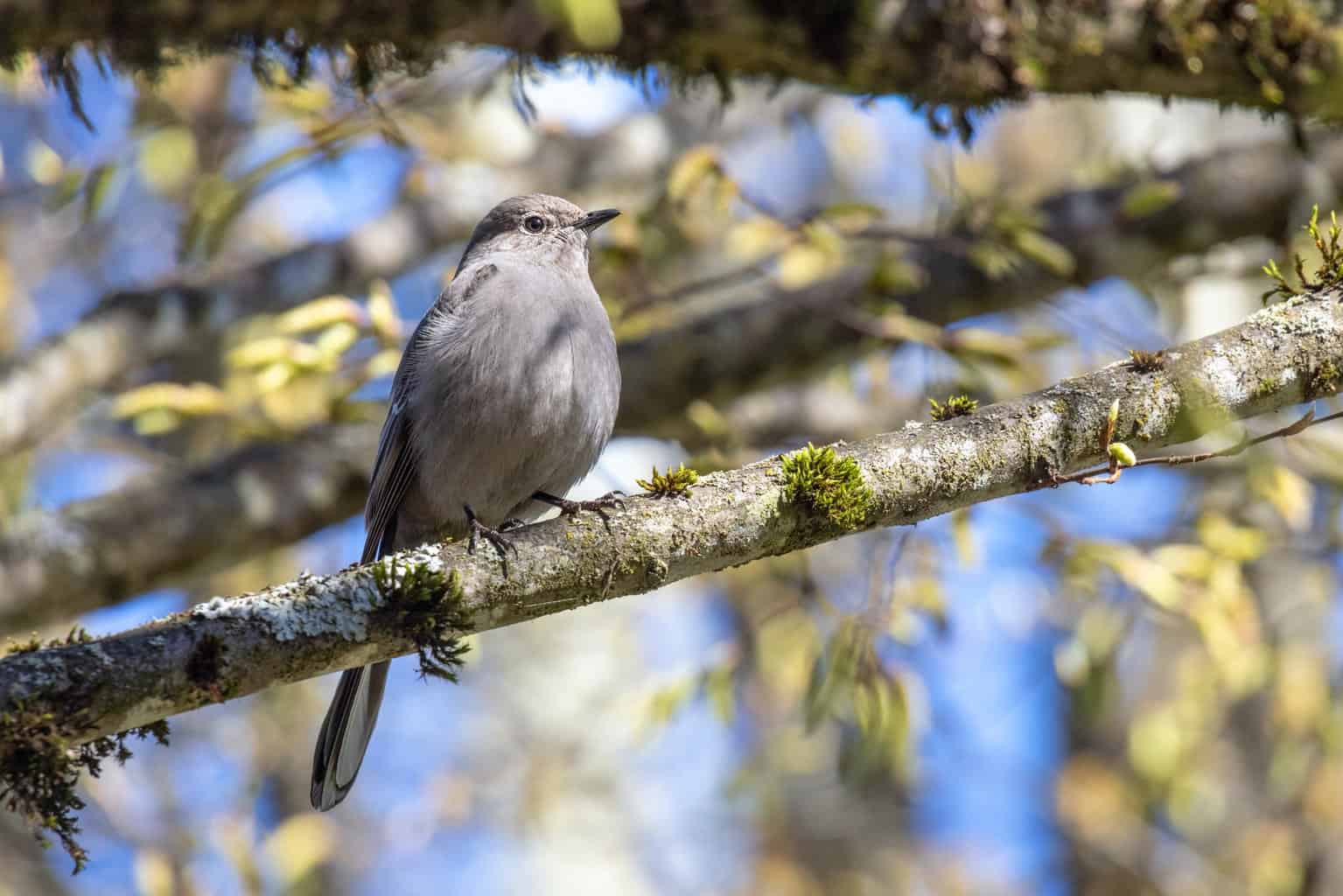
- Length: 7.9-8.7 in (20-22 cm)
- Weight: 1.1-1.2 oz (30-35 g)
- Wingspan: 13.0-14.6 in (33-37 cm)
These are mountain birds with a grey hue similar to the mockingbird. But they have a white eye-ring that mockingbirds do not have and a small buff mark on the wing.
They lack the larger white areas of plumage on the mockingbird of the underparts and wing flashes.
Blue-Gray Gnatcatcher
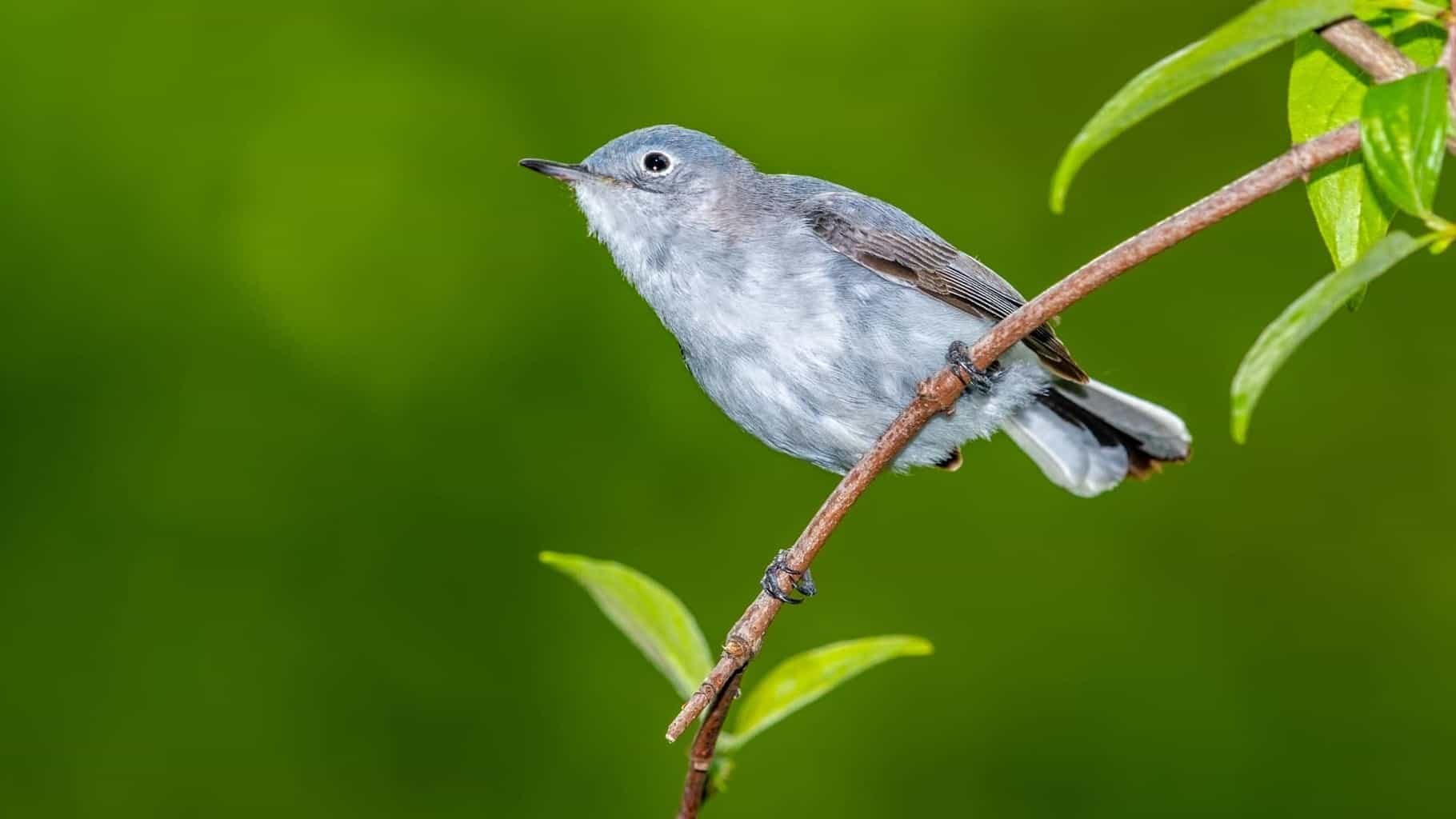
- Length: 3.9-4.3 in (10-11 cm)
- Weight: 0.2-0.3 oz (4.8-8.9 g)
- Wingspan: 6.3 in (16 cm)
This small bird is less than half the size of a mockingbird and flits quietly through the undergrowth rather than being loud and conspicuous like the mockingbird.
But with its white belly, breast, and grayish back, it might be mistaken for a mockingbird.
But it has a much bluer hue to its back too, and a prominent white eye-ring helps set it apart.
Sage Thrasher
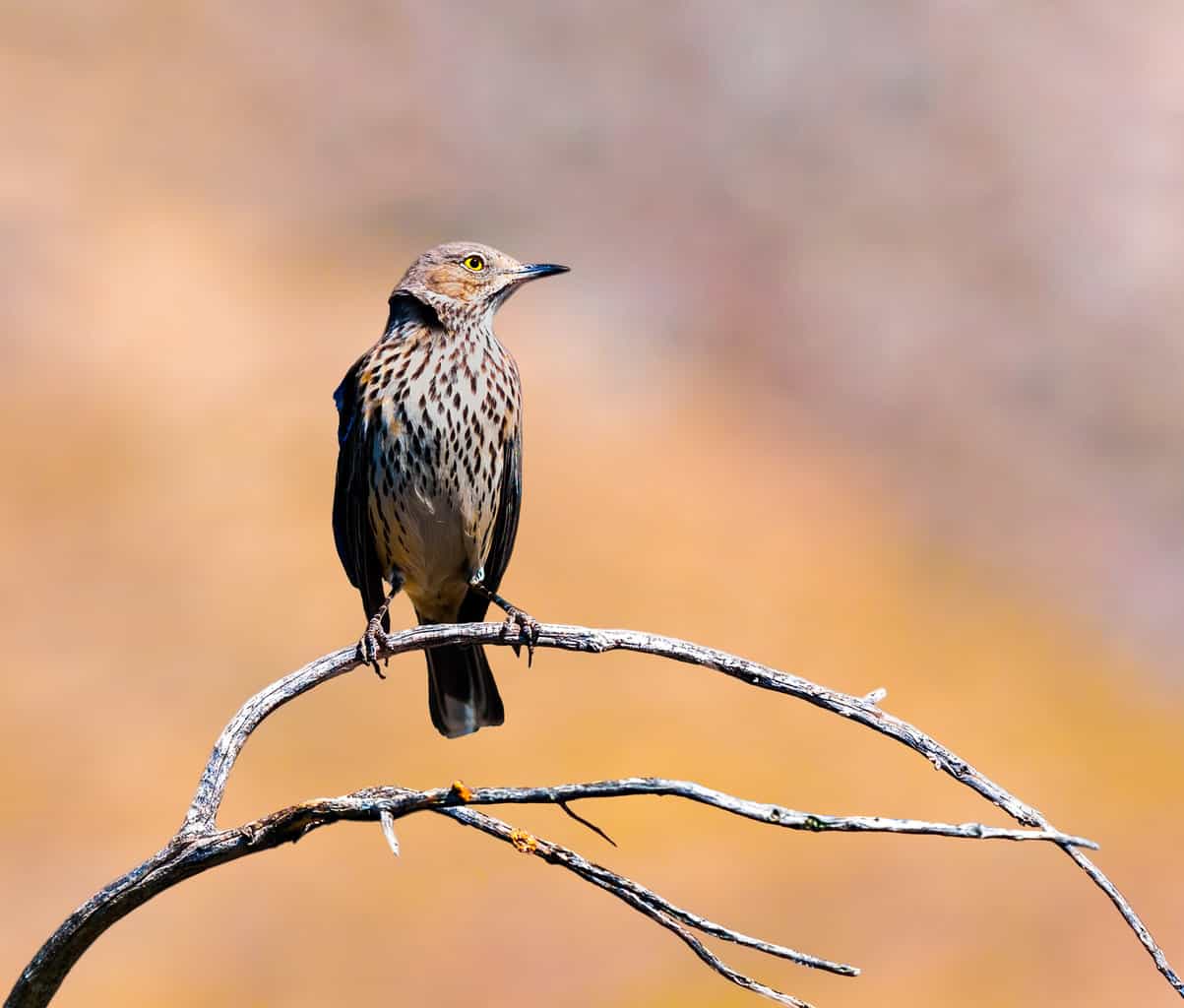
- Length: 7.9-9.1 in (20-23 cm)
- Weight: 1.4-1.8 oz (40-50 g)
- Wingspan: 12.6 in (32 cm)
Sage thrashers have a greyish-brown back like the mockingbird. But they lack the white underparts and wing and tail flashes of the mockingbird and instead have streaked breasts and bellies with buff and brown hues.
Gray Kingbird
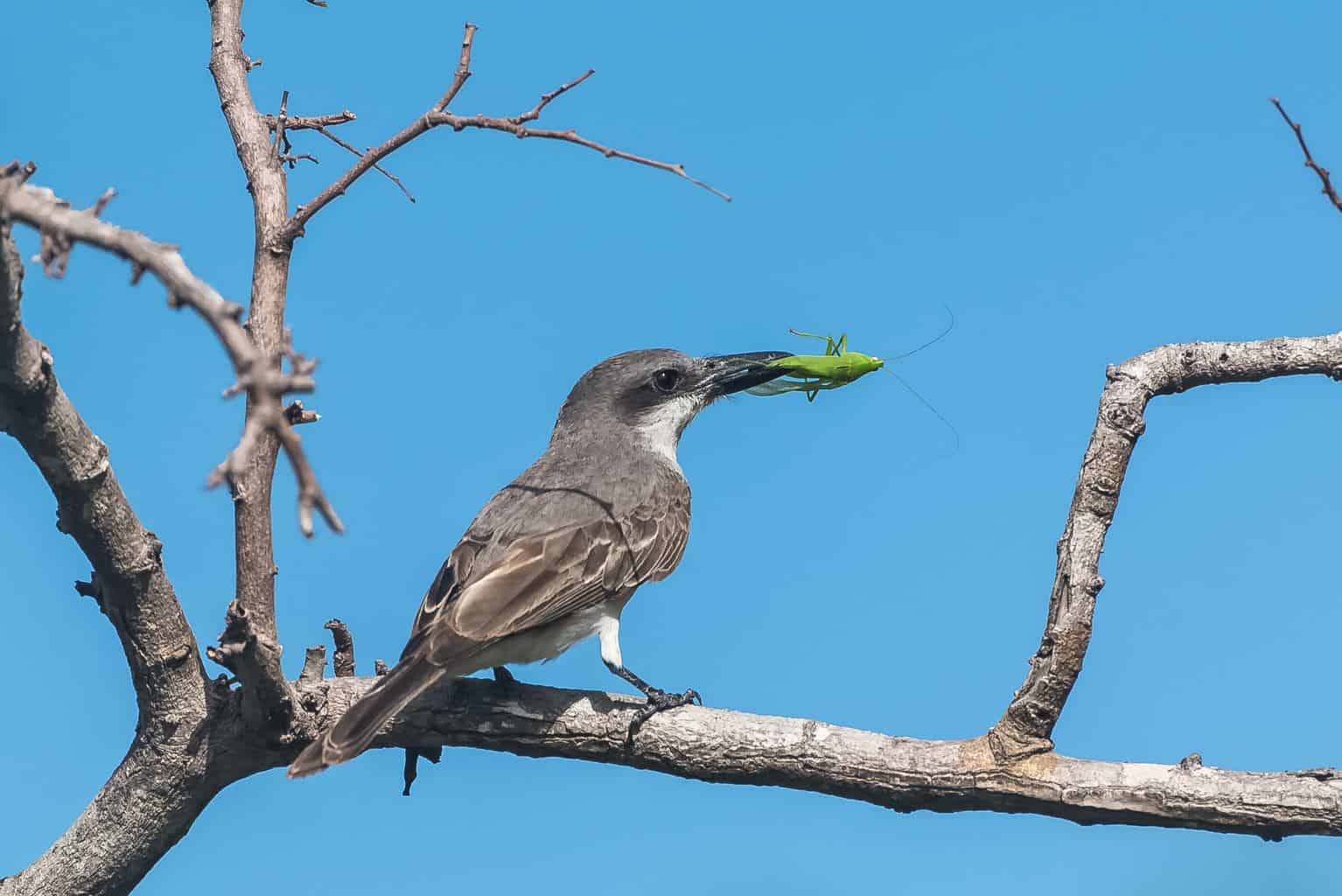
- Length: 9.1-9.4 in (23-24 cm)
- Weight: 1.3-1.8 oz (37-51.2 g)
- Wingspan: 14.0 in (35.6 cm)
This is a common site around the Keys, found only in Florida and to the southeast of there to South America.
It resembles the mockingbird’s gray upperparts and clean white under portions. But it has broad shoulders and a larger head and lacks the white tail and wing flashes.
Canada Jay
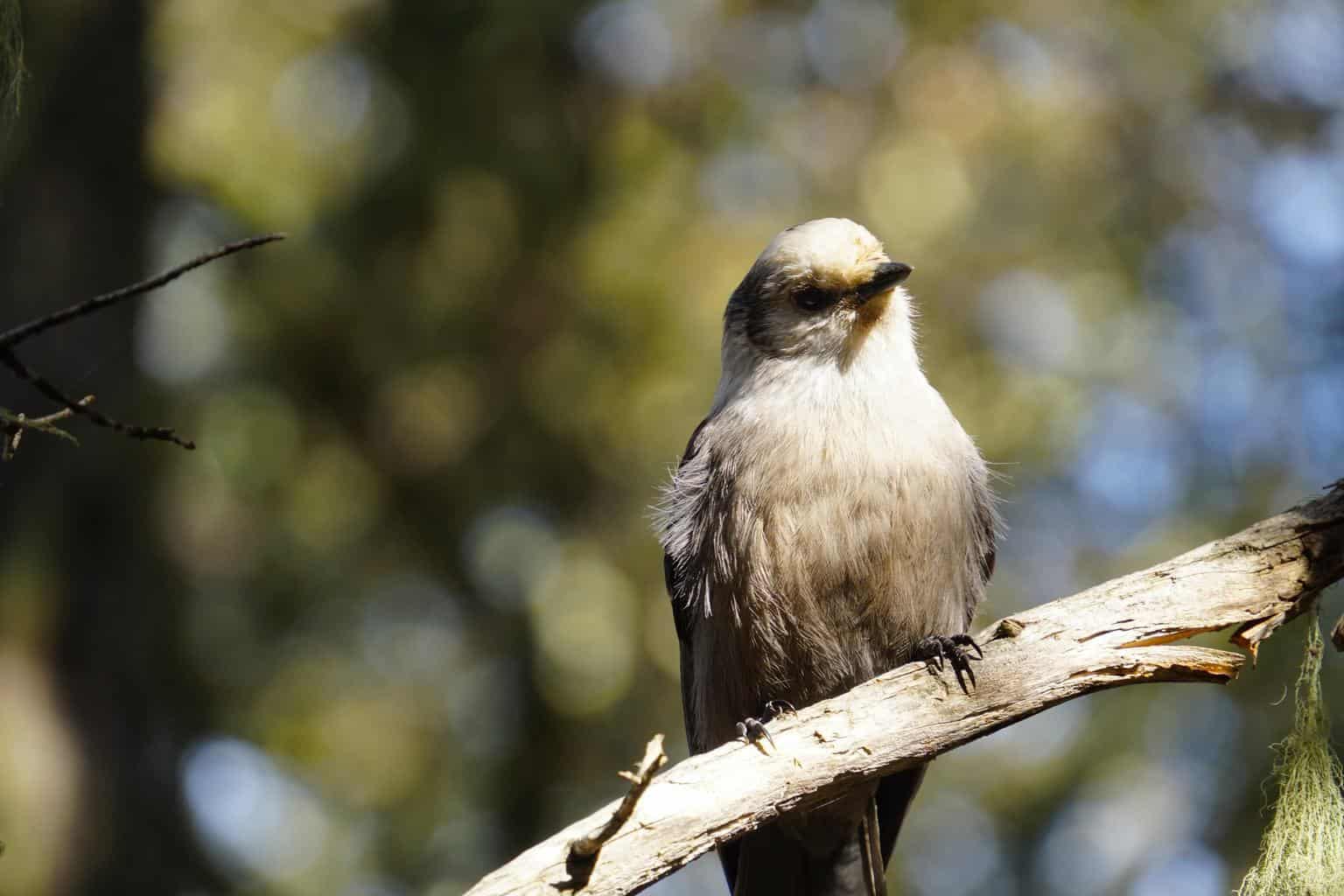
- Length: 9-13 in (25-33 cm)
- Weight: 65-70 g
- Wingspan: 14.0 in (35.6 cm)
The Canada Jay is around the same size as the mockingbird and has grey plumage. But there are also a lot of differences between the two.
Canada jays have white necks and faces, breasts and bellies, and they don’t have yellow irises like mockingbirds.
Gray Flycatcher
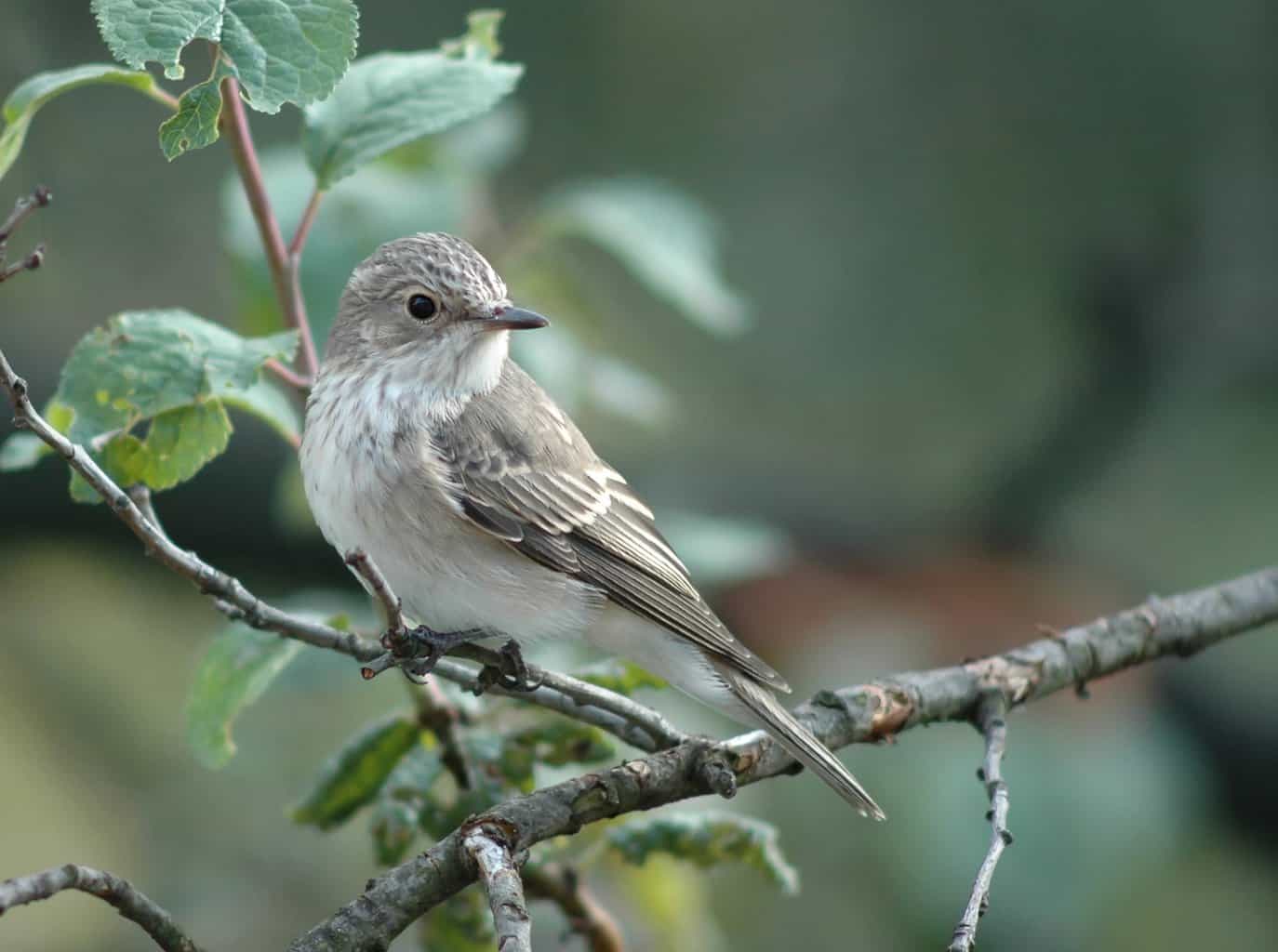
- Length: 5.5-5.9 in (14-15 cm)
- Weight: 0.4-0.5 oz (11-14 g)
- Wingspan: 8.7 in (22 cm)
Though they share the gray upperparts and white underneath the mockingbird, they are much smaller and lighter.
Their eyes are also completely black with white eye rings, which sets them apart from the mockingbird.
Warbling Vireo
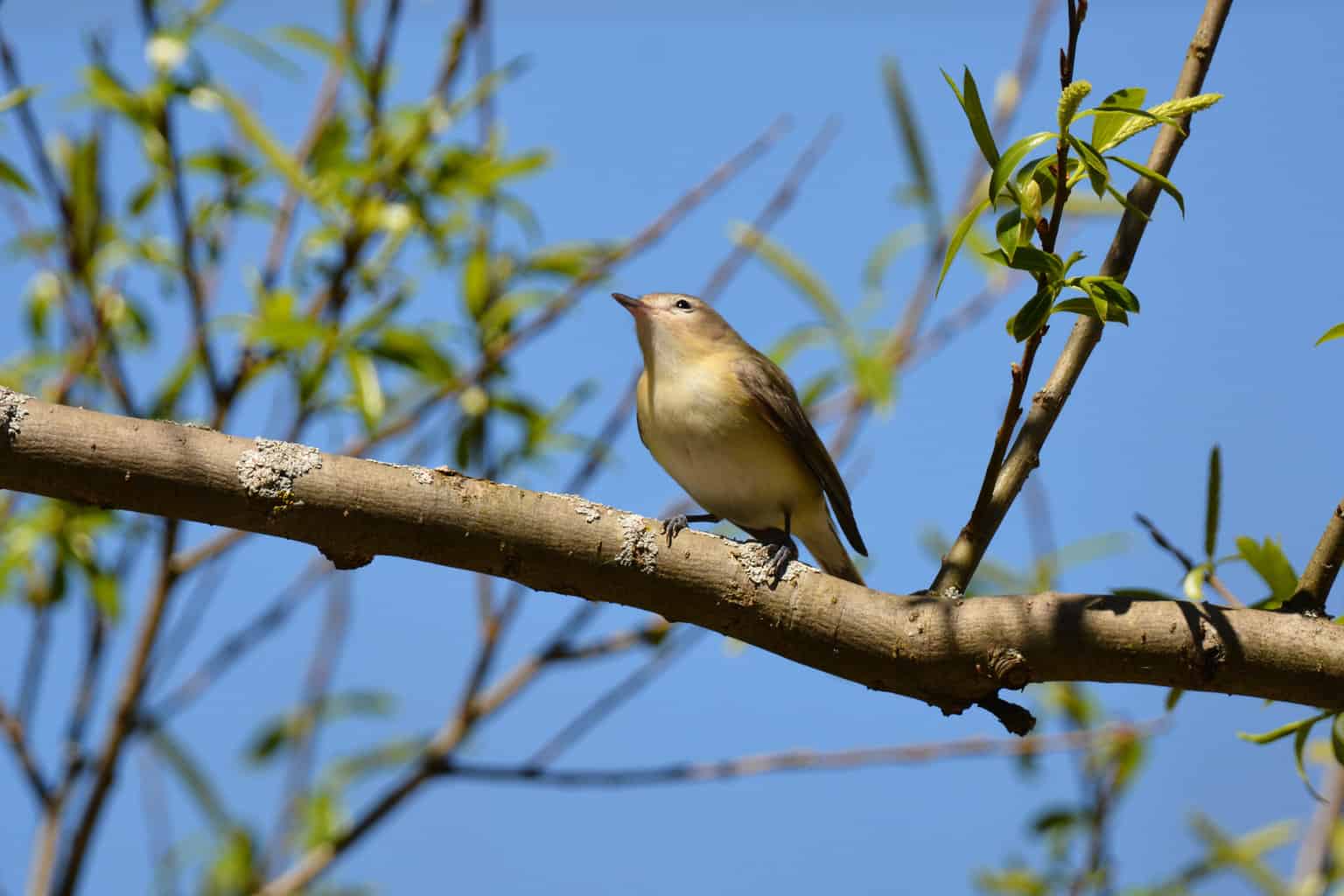
- Length: 4.7-5.1 in (12-13 cm)
- Weight: 0.3-0.6 oz (10-16 g)
- Wingspan: 8.7 in (22 cm)
The warbling vireo is another small songbird that might superficially resemble the mockingbird but, again, is much smaller and lighter.
They also have different eyes as they do not have the yellow iris of the mockingbird but rather eyes of a dark brown hue.
The catbird and the thrasher listed above are related to and in the same family as northern mockingbirds – as mentioned above, they are in the Mimidae family. But the other birds, while similar in some ways, are not closely related.
Recognizing the similarities and differences between mockingbirds and these other birds will help you better identify the birds you can spot in your area.
